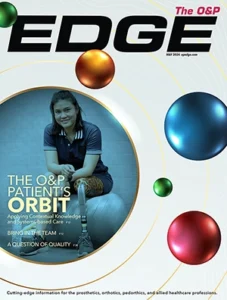The last couple of months I talked about making the big decision, and then I introduced you to the Gemba Walk. This month, I’m delving into the vital topic of patient throughput and the efficient provision of quality care in O&P. I want to stitch together two powerful tools to show how they can collectively streamline a patient’s journey through your practice.
The stakes are high in O&P care, especially in prosthetic patient care, and more specifically, new patients. It is generally accepted that a day’s delay in getting a patient walking adds about an extra week of rehabilitation. So how do we ensure the gears are well oiled in the machinery of care delivery? The Gemba Walk and weekly work in progress (WIP) meetings are the dynamic duo that help in this mission.
Support authors and subscribe to content
This is premium stuff. Subscribe to read the entire article.




